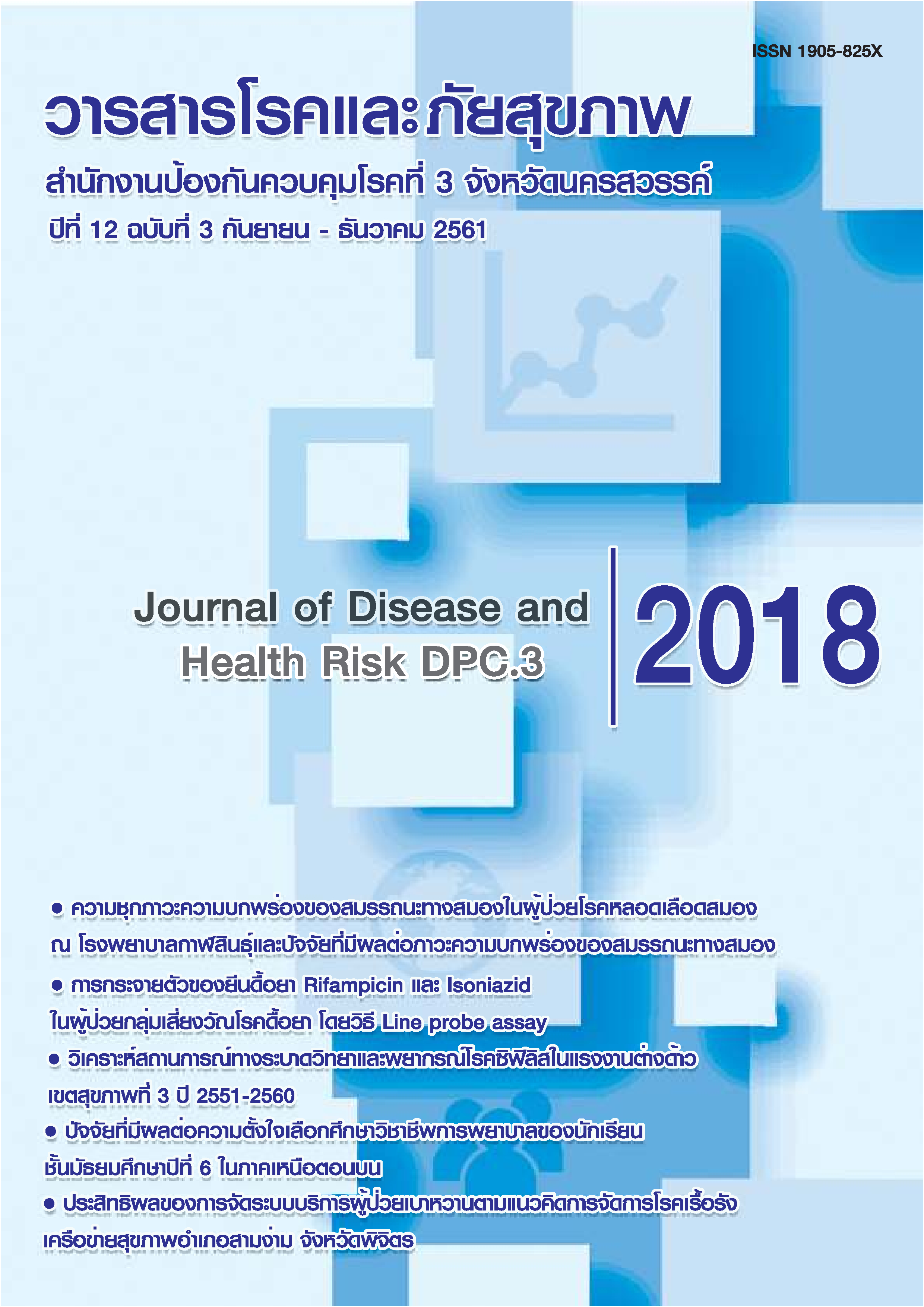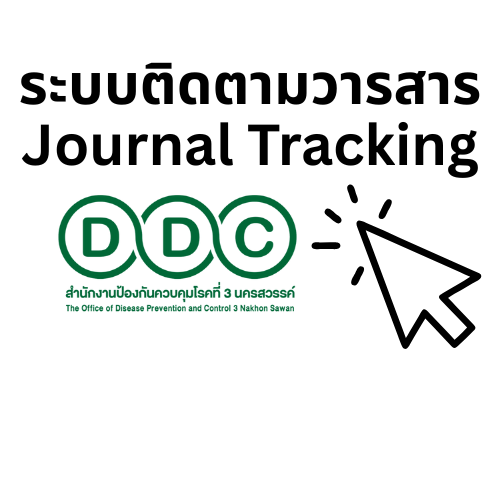INTENTIONS TO ENROLL IN THE NURSING PROFESSION AMONG SENIOR HIGH SCHOOL STUDENTS IN THE UPPER NORTHERN REGION
Keywords:
Intentions to enroll in the Nursing Profession, Attitude, Beliefs, Self behavioral control, Normative norms, Senior high school studentsAbstract
The purpose of this study was to predict the factors affecting on intentions to enroll in the nursing program among senior high school students in the upper northern region. Participants were selected using multi-stage sampling method. All data were collected from a set of 500 senior high school students at the schools located in the upper northern region. Data were analyzed descriptive method, the Pearson product-moment correlation coefficient and Stepwise-multiple regression correlation coefficient.
Research results showed that:
- Independent factors: attitude toward nursing profession, beliefs on self behavioral control toward study nursing program, perceived behavioral control on normative norms and beliefs on nursing profession were significantly positive relate to intentions to enroll in the nursing program (r=.771, .913, .720, .913, 649, .537, .576 respectively) at p-value < .01 level. Furthermore, inclination of subjective norms on nursing profession was significantly low positive relate to intentions to enroll in the nursing program (r=.100) at p-value < .05 level.
- The strongest predictor was attitude toward nursing profession (β =.863, p<.001). It was significantly affected to intentions to enroll in the nursing program and predicted intentions to enroll in the nursing program at 74.50 percent (R2 = .745 , Adjusted R2 =.74 , F = 1453.028, p < .001)
The study showed that intentions influenced to enroll in the nursing program. Thus, nursing colleges in Praboromarajchanok Institute for Health Workforce Development should be created update activities to enhance the positive attitude and image of the institute in order to increasingly a number of the students for study in the nursing program.
References
2. สำนักงานกองทุนสนับสนุนการสร้างเสริมสุขภาพ. กลุ่มโรคเรื้อรัง (NCD). [อินเทอร์เน็ต]. 2561. [เข้าถึงเมื่อ
25 ธันวาคม 2561]. เข้าถึงได้จาก http://www.thaihealth.or.th/microsite/categories/5/ncds/2/173/176
3. วิจิตร ศรีสุพรรณ และ กฤษดา แสวงดี. ข้อเสนอเชิงนโยบายในการแก้ปัญหาการขาดแคลนพยาบาลวิชาชีพ
ในประเทศไทย. วารสารสภาการพยาบาล 2555; 27(1): 5-12.
4. ชลาลักษณ์ สิริภักดีกาญจน์ และเบญจมาศ บุญรับพายัพ. การพัฒนาบันไดวิชาชีพทางการพยาบาล. วารสาร
พยาบาลทหารบก 2557; 15(3): 75-80.
5. Needleman, J., Buerhaus, P. Mattke, S., Mattke, M., Stewart, & K. Zelevinsky. Nurse-staffing
level and the quality of care in hospitals. N Eng J Med 2002; 346(22): 1715-22.
6. . การพัฒนาระบบการแนะแนวโลกของงานอาชีพนักเรียนไทยยุค Thailand 4.0. [อินเทอร์เน็ต].
2560. [เข้าถึงเมื่อ 25 ธันวาคม 2561]. เข้าถึงได้จาก https://www.slideshare.net/cchatpong/thailand-
40-84872581
7. สถาบันพระบรมราชชนก กระทรวงสาธารณสุข. คู่มือการคัดเลือกบุคคลเข้าศึกษาหลักสูตรต่าง ๆ
ของสถาบันพระบรมราชชนก กระทรวงสาธารณสุข ปีการศึกษา 2560. นนทบุรี: กลุ่มพัฒนาการศึกษาสถาบัน
พระบรมราชชนก กระทรวงสาธารณสุข; 2560.
8. ศศิวิมล เกลียวทอง. ปัจจัยบางประการที่ส่งผลต่อทักษะชีวิตของนักเรียนชั้นมัธยมศึกษาปีที่ 5 สำนักงานเขตพื้นที่
การศึกษามัธยมศึกษา เขต 2. วารสารวิชาการ Veridian E-Journal 2013; 6(3): 443-60.
9. Ajzen, J. The Theory of Planned Behavior. Organizational Behavior and Human Decision
Process, 1991; 50(2): 179-211.
10. มัณฑนา เหมชะญาติ, รัชชนก สิทธิเวช และศุภกิจ เฉลิมกิตติชัย. การเปรียบเทียบความตั้งใจและปัจจัย
ที่มีอิทธิพลต่อความตั้งใจในการเลือกศึกษาวิชาชีพการพยาบาลของนักเรียนมัธยมศึกษา ชั้นปีที่ 6
ในเขตภาคตะวันออก ในปีการศึกษา 2547 กับปีการศึกษา 2553. วารสารวิทยาลัยพยาบาลพระปกเกล้า
จันทบุรี 2554; 22(2): 28-49.
11. รุ่งศรี แสงแก้วศรี. ความสัมพันธ์ระหว่างเจตคติกลุ่มอ้างอิงต่อวิชาชีพพยาบาลกับการเลือกเรียนในคณะ
พยาบาลศาสตร์ของนักเรียนชั้นมัธยมศึกษา เขตภาคเหนือตอนล่าง. วารสารสวนปรุง 2550; 22(2): 34-42.
12. นงลักษณ์ สุวิสิษฐ์ และศรินรัตน์ วัฒนธรนันท์. ปัจจัยที่เกี่ยวข้องกับการเลือกสมัครเข้าศึกษาสาขา
พยาบาลศาสตร์. ที่ประชุมประธานสภาอาจารย์มหาวิทยาลัยแห่งประเทศไทย (ปอมท.). [เข้าถึงเมื่อ
15 พฤษภาคม 2560] เข้าถึงได้จาก: http://app.eng.ubu.ac.th/~ubusenate/news_file/cufst_19.pdf
13. Tabachnick, BG. & Fidell, L.S. Using multivariate statistics (5th ed.). Boston: Pearson; 2007.
14. อมรรัตน์ ศรีคำสุข โซโตะ, วิภาพร วรหาญ และวิพร เสนารักษ์. ความสุขของนักศึกษาพยาบาลหลักสูตร
พยาบาลศาสตรบัณฑิต มหาวิทยาลัยขอนแก่น วารสารพยาบาลศาสตร์และสุขภาพ 2554; 34(2): 70-78.
15. ปณิธาน วัฒนพานิชกิจ และภาวรรณ พันธุ์ไพโรจน์. การประเมินหลักสูตรพยาบาลศาสตรบัณฑิต
มหาวิทยาลัยธรรมศาสตร์. ปทุมธานี: มปพ.; 2551.
16. Ajzen, I, & Cote NG. Attitude and the prediction of behavior. In: Crano WD, & Prislin R, (Eds.).
Attitudes and attitude change. NY: Psychology press; 2008. p. 289-311.
Downloads
Published
How to Cite
Issue
Section
License
Copyright notice
Article published in the Journal of Disease and Health Risk DPC.3 Nakhon Sawan. It is considered a work of academic research and analysis as well as the personal opinion of the author. It is not the opinion of the Office of Disease Prevention and Control 3, Nakhon Sawan. Or the editorial team in any way Authors are responsible for their articles.
Privacy Policy
Name, address and e-mail address specified in the Journal of Disease and Health Risk DPC.3 Nakhon Sawan. It is used for identification purposes of the journal. And will not be used for any other purpose. Or to another person.









